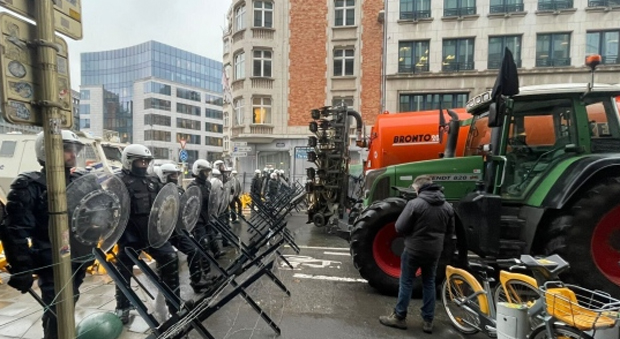More than half of America’s underground water sources are rapidly drying up, putting the country’s food system at enormous risk, according to a new study.
Over 50 percent of aquifers in the U.S. are losing water at an unprecedented rate, the research paper revealed on Wednesday in Nature.
According to researchers, the collapse of underground water levels has increased during the 21st century.
The aquifers, which supply most U.S. water systems and are responsible for keeping vast amounts of farmland manageable, are now severely depleted.


The decline is so dire, it even threatens to cause irreversible damage to the American economy.
In states like Kansas, such groundwater loss is so bad that the major aquifer beneath its land can no longer support industrial-scale agriculture. As a result, corn yields have plummeted, a stark warning to America’s status as a ‘food superpower,’ especially if it were to spread through the country.
Meanwhile, in New York State, years of overpumping are now threatening drinking water wells.
Over in Phoenix, the crisis is so severe the state announced there is not enough groundwater to build houses that require aquifers to function as liveable homes.
In parts of Utah, California, and Texas, so much water is being pumped that it’s causing foundations to crack and roads to buckle, while rivers that once relied on groundwater have become dry.
The pace of groundwater depletion in California’s Central Valley was made worse by the drought in 2022, along with heavy agricultural pumping.
The Los Angeles Times reported:
The research shows that chronic declines in groundwater levels, which have plagued the Central Valley for decades, have worsened significantly in recent years, with particularly rapid declines occurring since 2019.
“We have a full-on crisis,” said Jay Famiglietti, a hydrology professor and executive director of the University of Saskatchewan’s Global Institute for Water Security. “California’s groundwater, and groundwater across the southwestern U.S., is disappearing much faster than most people realize.”
Co-author Scott Jasechko of the University of California, Santa Barbara, told The Hill that “groundwater levels are declining rapidly in many areas.”
“And what’s worse, the rate of groundwater decline is accelerating in a large portion of areas,” Jasechko said.
The aquifers don’t just support clean water for many Americans, they also support much of the country’s food system.
However, the problem isn’t just isolated to the U.S.; the impacted water aquifers affect millions of people worldwide.
But despite the alarming findings, researchers said many of the once-declining regions have bucked the trend.
“Long-term groundwater losses,” they wrote, “are neither universal nor inevitable.”
Hydrologists refer to aquifers as “deepening” or “shallowing” to describe how close groundwater is or is further from the surface.
Researchers found the prime culprit to “shallowing” was agriculture, with 70 percent of global withdrawals going toward irrigation. So, the decline in aquifers that support U.S. agriculture and cities is self-explanatory.
“We’re finding that in dry places where a large portion of the land is under cultivation, groundwater level declines are, if anything, accelerating over time,” Jasechko said.
Regions that suffered a decrease in rain in the early 21st century compared with a much wetter late 20th century were likely to see aquifers declining more quickly.
Because less rain is entering the system to fill up the aquifers, farmers are forced to turn to groundwater to make up for what precipitation the surface water can no longer provide.
According to USGS:
“The water stored in the ground can be compared to money kept in a bank account. If you withdraw money at a faster rate than you deposit new money you will eventually start having account-supply problems. Pumping water out of the ground faster than it is replenished over the long term causes similar problems. The volume of groundwater in storage is decreasing in many areas of the United States in response to pumping.”
“Wells are only so deep,” Jasechko said, adding, “They get rendered useless for extracting groundwater.”
Jasechko also notes that when an aquifer deepens into the earth’s surface, structural problems start.
As the ground sags, the structure fails, while creeks and rivers leak into the ground where groundwater levels fall, causing sinkholes.
Unfortunately, in many parts of the U.S., groundwater needs is not managed properly, putting the country at serious risk.
The coming water shortage is only the beginning. Filmmaker and renowned author, Steve Quayle, warned about the government’s nefarious plan to unload a series of catastrophes in his explosive documentary, Megadrought.
You can buy Megadrought HERE.
Watch Trailer:











